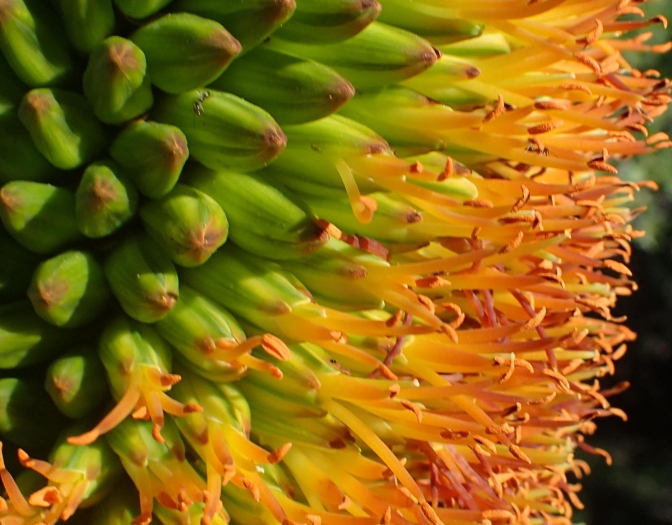Mountain Aloe
(Aloe broomii)
Mountain Aloe (Aloe broomii)
/
/

Nicola van Berkel
CC BY-SA 4.0
Image By:
Nicola van Berkel
Recorded By:
Copyright:
CC BY-SA 4.0
Copyright Notice:
Photo by: Nicola van Berkel | License Type: CC BY-SA 4.0 | License URL: http://creativecommons.org/licenses/by-sa/4.0/ | Rights Holder: Nicola van Berkel | Publisher: iNaturalist | Date Created: 42813 |






















Estimated Native Range
Summary
Aloe broomii, commonly known as Mountain Aloe, is an evergreen succulent native to rocky outcrops and grassy slopes in the dry regions of Southern Africa, particularly South Africa and Lesotho. It is a robust plant with a short stem and typically grows up to 1.5 meters high, including the inflorescence. Mountain Aloe is usually a single-stemmed aloe, although it may occasionally split into groups with up to three rosettes. The leaves are thick and fleshy, with a bluish-green hue and are edged with small, very dark thorns, which is a distinguishing characteristic compared to other aloes with green or white thorns. The most notable feature of Aloe broomii is its unique inflorescence, where the flowers are concealed by extended bracts, giving it a sinuous, snake-like appearance. The flowers, which are typically yellow or orange, bloom from late spring to early summer and are less showy due to the bracts.
Mountain Aloe is valued for its drought tolerance and architectural form, making it an excellent choice for xeriscaping and rock gardens. It is also used as an accent plant in succulent collections. In cultivation, it requires well-drained soil, thrives in full sun, and needs very low to low water once established. Propagation is typically done from seed. Gardeners should be aware that Aloe broomii can be susceptible to root rot if overwatered or planted in poorly drained soils.CC BY-SA 4.0
Mountain Aloe is valued for its drought tolerance and architectural form, making it an excellent choice for xeriscaping and rock gardens. It is also used as an accent plant in succulent collections. In cultivation, it requires well-drained soil, thrives in full sun, and needs very low to low water once established. Propagation is typically done from seed. Gardeners should be aware that Aloe broomii can be susceptible to root rot if overwatered or planted in poorly drained soils.CC BY-SA 4.0
Plant Description
- Plant Type: Succulent
- Height: 1-3 feet
- Width: 1-3 feet
- Growth Rate: Moderate
- Flower Color: Yellow, Orange
- Flowering Season: Winter
- Leaf Retention: Evergreen
Growth Requirements
- Sun: Full Sun
- Water: Very Low, Low
- Drainage: Fast
Common Uses
Bee Garden, Bird Garden, Drought Tolerant, Fire Resistant, Hummingbird Garden, Low Maintenance, Rabbit Resistant, Rock Garden
Natural Habitat
Rocky outcrops and grassy slopes in the dry regions of Southern Africa
Other Names
Common Names: Snake Aloe, Berg Alwyn
Scientific Names: , Aloe broomii,
GBIF Accepted Name: Aloe broomii Schönland